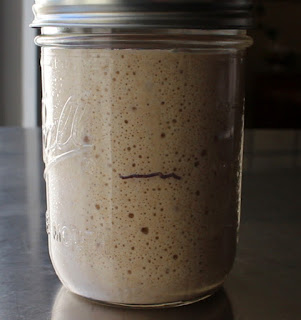Anyway, thanks to an amazing refresher course from Northwest Sourdough (which I highly recommend you check out, and subscribe to), I decided to take those videos down, and do an updated, 2-part recipe. There’s really nothing like homemade sourdough, and notwithstanding the time it takes for your starter to mature, it’s a very simple, and easy process.
The exact number of grams seen herein doesn’t really matter, as long as you’re using exactly the same amount of flour and water, by weight. I picked 70 grams, since it seemed like a nice amount to film, but the ratio is really the key. Same goes for the types of flour used. I like half spelt, and half bread flour, but this will work with pretty much any combination, including all wheat flour.
I never like to get too deep in the weeds when showing a technique, so if you do want all the Latin terms, and detailed explanations for what exactly is happening here, there are endless resources online. All I care about is that this works. After the second day, toss away half your mixture, feed with equal parts flour and water, wait for the microorganisms to do their thing. Stay tuned for part two, or as I call it the good part, where we’re going to make a loaf of incredibly beautiful, tasty bread, and as always, enjoy!
Day 1: combined 70 g *water and 70 g flour
Day 2: add 70 g water and 70 g flour
Day 3: discard 140 g of your starter, and feed with 70 g water and 70 g flour
Day 4 until maybe Day 10: repeat the step above, every day, until your starter smells fruity, yeasty, and beautifully fermented.
- Test by seeing if the mixture doubles within 2 to 3 hours after feeding.
-- All this is based on you keeping the mixture at 70°. If it’s cooler than that this will take longer, and if it’s warmer it may ferment too fast, although I’m not sure if that’s a problem.
Note: Once done, you can store in the fridge until needed. Most people recommend you feed it once a month or so.
* For best results, use bottled water, as chlorine can kill the yeast/bacteria.
* For best results, use bottled water, as chlorine can kill the yeast/bacteria.

